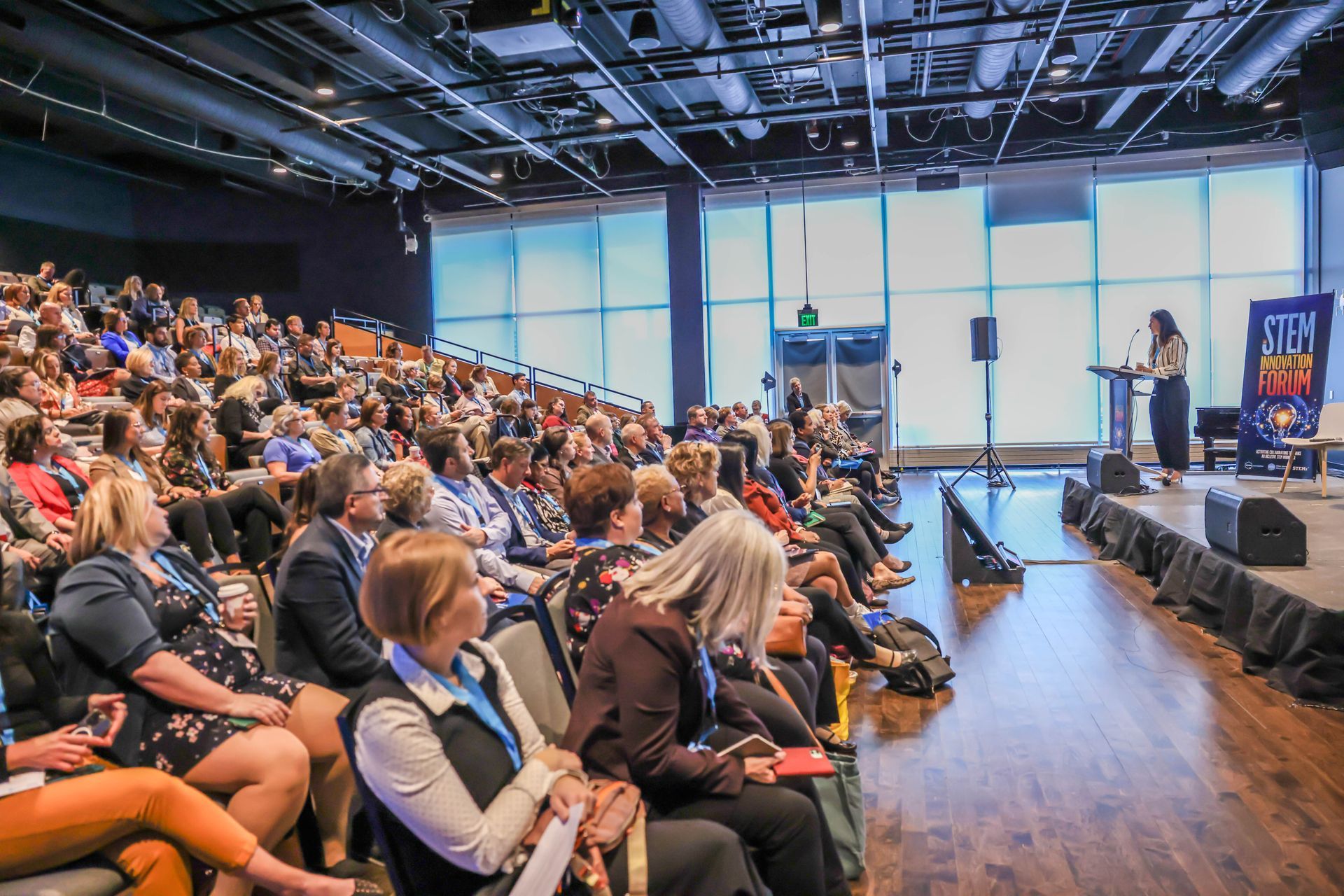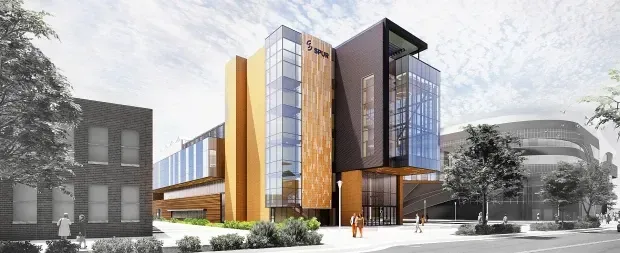Astronaut to keynote May conference and STEMx sessions posted
Our annual gathering, STEMxChange, is coming up in just a few weeks. Today, we’re announcing a new keynote. We’ll also detail the sessions that will make up the STEMx track.
Our second keynote will be…Astronaut Joe Acaba! Joining Grant Imahara , he’ll address both STEMxChange and the Tennessee STEM Innovation Summit. Just over a month ago, Acaba was completing a fiery descent through the atmosphere down to Earth. This descent marked the end of Acaba’s third mission for NASA. Most recently, he spent 168 days working in the International Space Station. Acaba joined astronaut Mark T. Vande Hei in a year-long NASA push to engage classrooms with the space station. Acaba brings a special perspective. Before joining NASA, he served five years as a teacher in Florida.
We’re also deeply proud to announce eight different sessions from STEMx member states. From Idaho to South Carolina, STEM schools to manufacturing, you’re sure to find something to help you make the most out of your dedication to effective STEM education. Read about all of the STEMx sessions below. Attendees will also have complete access to another 32 sessions organized by the Tennessee STEM Innovation Network.
Register now while spots remain! Details: www.stemx.us/stemxchange
Joseph M. Acaba NASA Astronaut
Acaba was selected by NASA in 2004. The California native has logged a total of 306 days in space during three missions. Most recently, Acaba served as Flight Engineer on the International Space Station for Expedition 53/54, landing back on Earth on February 28, 2018. Prior to arriving at NASA, Acaba taught middle and high school math and science.
Spaceflight Experience:
STS-119 (March 15 to March 28, 2009). This was the 125th shuttle flight, the 36th flight of Discovery and the 28th shuttle flight to the International Space Station. The primary objective of this flight was to deliver the final pair of power-generating solar array wings and truss element to the International Space Station. Acaba accumulated 12 hours and 57 minutes of Extravehicular Activity (EVA) in two spacewalks. STS-119 returned to land at the Kennedy Space Center, having traveled 202 orbits and 5.3 million statute miles in 12 days, 19 hours and 29 minutes.
Expedition 31/32 (May 15 through September 17, 2012). Acaba launched on May 15, 2012, from the Baikonur Cosmodrome in Kazakhstan. Gennady Padalka and Sergei Revin of the Russian Federal Space Agency and Acaba landed their Soyuz TMA-04M spacecraft in Kazakhstan on September 17, 2012. Acaba spent 123 days aboard the station as a Flight Engineer of the Expedition 31 and 32 crews. Acaba supported the arrival of the first commercial resupply spacecraft, SpaceX’s Dragon, in late May; and was prime robotic arm operator for the capture and release of the third Japanese cargo ship, HTV3. Acaba served as intra-vehicular crew member and robotic arm operator for two U.S.-based spacewalks, helping to restore a critical power unit and exchange a faulty camera on the station’s robotic arm. Acaba also participated in numerous scientific research experiments and performed regular maintenance and operational tasks aboard the orbiting complex.
Expedition 53/54 (September 13 through February 28, 2018). The crew launched from the Baikonur Cosmodrome aboard the Soyuz spacecraft. Acaba, who served as Flight Engineer, was joined by Astronaut Mark Vande Hei and Russian Cosmonaut Alexander Misurkin of Roscosmos. During the mission the crew marked the beginning of the first long-term increase in crew size on the U.S. segment, enabling NASA to double the time dedicated to research and achieve a record-setting week of research that surpassed 100 hours. Highlights from this research include investigations into the manufacturing of fiber optic filaments in microgravity, improving the accuracy of an implantable glucoses biosensor, and measuring the Sun’s energy input to Earth. Acaba completed one spacewalk to lubricate an end effector and install new cameras on the station’s arm and truss.
STEMx sessions at STEMxChange/Tennessee STEM Innovation Summit
| Session Title | Presenters | Organization | Description |
| STEMx Challenge Grants Panel
|
Moderated by Regina Schofield Jill Lansing Susie Teague Gay Stewart |
Battelle and STEMx Challenge Grant winners | Last Fall, we launched the STEMx Challenge Grant Program to provides STEMx states with up to $15,000 to develop solutions to pressing STEM education issues. Join STEMx state leaders to learn how the program coalesced partners around solving a pressing state issue. |
| Taking on the STEM Grand Challenges: What might you learn from South Carolina’s approach? | Grace Doramus, Tom Peters, and Susie Teague |
South Carolina Coalition for Mathematics and Science with 100kin10 | Join our session to learn how to take Grand Challenges from daunting to actionable and apply this innovative approach to move the needle against the STEM challenges in your state!
|
| Using Collaboration to Build Capacity and Increase STEM Engagement
|
Karen Peterson and Erin Hogeboom
|
National Girls Collaborative Project
|
Come learn about the National Girls Collaborative Project (NGCP), a model for sustainable collaboration among cross-sector stakeholders. Participants will engage in hands-on activities designed to facilitate collaboration and leverage resources and expertise, learn about current research on the importance of collaboration, and be introduced to the free tools available from the National Girls Collaborative. |
| Roadmap to Tennessee STEM School Designation | Brandi Stroecker and Sandy Watkins | Tennessee STEM Innovation Network | Tennessee STEM School Designation was developed to provide a “roadmap” for schools to successfully implement a STEM education plan at the local level. The tools and resources created define the attributes necessary for a school, regardless of location, to create a comprehensive STEM learning environment for its students. Learn more about the process to become a designated Tennessee STEM School, recognized by the Tennessee Department of Education. |
| Computer Science: Becoming the Focus of STEM
|
Anthony Owen and Scott Smith | Arkansas Department of Education, Arkansas Public School Resource Center | Through the bipartisan actions of the General Assembly and Governor, Arkansas led the nation by being the first state to offer computer science in every high school. The state is continuing to refine and implement a successful statewide CS initiative that is being replicated in other states. In this session, participants will learn how effective partnerships can support building an effective state K-12 CS initiative. |
| MakerMinded for STEM Career Awareness
|
Heather Sherman | Ohio STEM Learning Network | MakerMinded is a free program designed to help students learn about opportunities in fields they may not have considered before, like advanced-manufacturing and explore them through site visits, and hands on activities. MakerMinded has been engaging students in TN, OH, KY and MI. In this session, learn about MakerMinded’s success across states, and hear about opportunities to bring this program to your state through a new funding opportunity coordinated by STEMx. |
| The Tennessee Rural STEM Collaborative | Brandi Stroecker and Evan Curran | Tennessee STEM Innovation Network
|
Interested in place-based education? Hear how the Tennessee Rural STEM Collaborative leverages PBE to increase rural educator’s capacity to connect with valuable expertise and access assets that focus on STEM locally. Join us to hear from current Collaborative members and how you can become involved! |
| How Public Private Partnerships are Changing the Landscape of STEM in Idaho | Angela Hemmingway and Anne Seifert | Idaho STEM Action Center, Idaho National Laboratory |
This interactive session will highlight successful approaches to STEM partnerships including providing mentorship and volunteer opportunities to serve in K-12 schools and out-of-school programs, expanding work-based experiential learning programs, expanding STEM and CS camps, competitions, and family events. |





